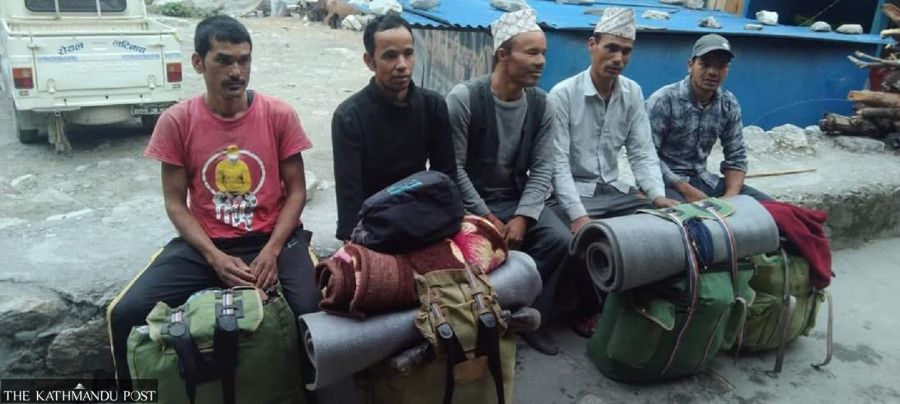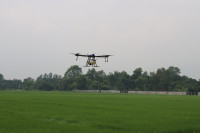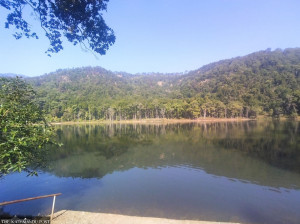Sudurpaschim Province
Yarsa yields dwindle due to overharvesting
A picker used to collect 25 to 30 pieces of yarsa until a few years ago but one has hardly found three to seven pieces this year.
Manoj Badu
Yarsagumba pickers in Darchula have started returning from the highlands where they had gone a few weeks ago to collect the precious fungus. According to the pickers, low yarsagumba yield and overcrowding in the highlands have led to a decrease in yarsagumba collection this season.
Yarsagumba picking season falls in May and June, right before the monsoon starts, at elevations between around 3,000 and 5,000 metres above the sea level in various mountain districts of Nepal.
According to locals and regular yarsagumba pickers, overharvesting and an increase in the number of collectors are the main reasons behind the dwindling collection of yarsagumba. They say the yarsagumba yield has decreased in the Api Himal area and other highlands in Darchula district.
“The villagers started returning home as they could not find yarsagumba in the highlands. Yarsagumba could go extinct one day if there is no regulation on the amount of collection done every year,” said Nayan Singh Dhami, a resident of Api Himal Rural Municipality-1. “The government gives permits to a large number of pickers to go to the highlands and people without a permit also join them, leading to overcrowding and overharvesting. The authorities are only focussed on collecting tax and do not care about the impact of overharvesting in the highlands.”
Nayan Singh, who ascended to the highlands a few weeks ago, returned home disappointed for his arduous highland sojourn did not bear good results.
“The villagers who used to earn a good amount of money by collecting yarsa are disappointed. Many of us returned home with heavy hearts since our collection was very low,” said Nayan Singh. “The authorities allowed people from outside the district to go to the highlands to harvest the precious fungus. This led to overcrowding in the highlands and no one got a good share.”
The collection of yarsagumba is a major income source for the people of Darchula, a mountain district of Sudurpaschim Province. The decreasing yield of the precious medicinal fungus this year has worried the local residents.
Yarsagumba, which is found in the Himalayan region, is formed as a parasitic fungus that grows within a variety of caterpillars. It kills the caterpillar and emerges from its body as a thin stem.
Tens of thousands of villagers flock to the Himalayan foothills in 12 mountain districts of the country to collect yarsagumba during the harvest season. It takes several days for them to travel to the highlands, where they have to live in makeshift tents for up to two months.
Bishan Singh Budhathoki of Api Himal Rural Municipality-6 earned around Rs 150,000 with yarsagumba sale last year. This year his earnings from yarsagumba collection have not even crossed Rs 50,000.
“I could collect only half of what I did last year. The fungus yield has decreased but the number of pickers has increased. The number of collectors increased threefold this season in comparison to last year. This is not a sustainable approach. We may lose the fungus for good if we don’t stop overharvesting,” said Budhathoki.
Thousands of people from Api Himal, Byas, Naugad, Marma and Duhu rural municipalities in Darchula eke out their living mainly by collecting yarsagumba. Almost all adults in the village are now in various highlands to collect yarsa and have left the children and elderly people in the settlements.
Yarsa pickers risk their lives every year during the harvest season. Many people die of altitude sickness and other diseases or by falling off cliffs.
“It is not easy to go to the highlands and collect yarsa. The villagers risk their lives but are unable to get a good yield. The harvest and collection of the fungus are gradually decreasing every year,” said Harak Singh Khati, a school teacher at Himalaya Secondary School in Api Himal-6.
“The government authorities should take necessary initiatives for the sustainable use of yarsagumba,” he demanded.
According to Khati, a picker used to collect 25 to 30 pieces of yarsagumba in a season until a few years ago but one has hardly found three to seven pieces this year.




 9.12°C Kathmandu
9.12°C Kathmandu











%20(1).jpg&w=300&height=200)

